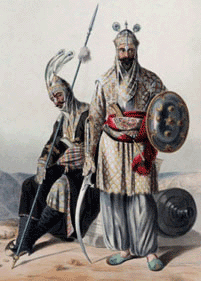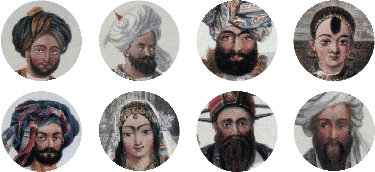 |
|||
| History Afghanistan is a mountainous country. Karakoram, a mountain range close to the north-eastern border, has mountains that exceed 7,000 meters. To the west from here, the Hindu Kush Mountain and mountain ranges that extend from this stretch out cut across the country. There is a mountain range in the center of the country, which is noted for being surrounded by a highway. To the north of Kabul is a mountain pass that runs through a cleft in a mountain range and that serves as a link to the northern regions. The climate is characterized by dry summers and cold winters, with many areas experiencing snowfall. Water from this melting snow forms the source of rivers and irrigation channels. There are huge regional differences, with the north exposed to icy winds from Central Asia and the south experiencing seasonal winds from India. At present, Afghanistan borders Tajikistan, Uzbekistan, and Turkmenistan to the north, Iran to thewest, as well as Pakistan to the south-east. As suggested by its designation as the gcrossroads of civilization,h Afghanistan is a country through which many civilizations have passed; in some cases it is seen as part of the Middle East, in some cases as part of South Asia, and in other cases as part of Central Asia. These historical and geographical circumstances are also reflected in the ethnic composition of Afghanistan. Geography Afghanistan is a mountainous country. Karakoram, a mountain range close to the north-eastern border, has mountains that exceed 7,000 meters. To the west from here, the Hindu Kush Mountain and mountain ranges that extend from this stretch out cut across the country. There is a mountain range in the center of the country, which is noted for being surrounded by a highway. To the north of Kabul is a mountain pass that runs through a cleft in a mountain range and that serves as a link to the northern regions. The climate is characterized by dry summers and cold winters, with many areas experiencing snowfall. Water from this melting snow forms the source of rivers and irrigation channels. There are huge regional differences, with the north exposed to icy winds from Central Asia and the south experiencing seasonal winds from India. At present, Afghanistan borders Tajikistan, Uzbekistan, and Turkmenistan to the north, Iran to the west, as well as Pakistan to the south-east. As suggested by its designation as the gcrossroads of civilization,h Afghanistan is a country through which many civilizations have passed; in some cases it is seen as part of the Middle East, in some cases as part of South Asia, and in other cases as part of Central Asia. These historical and geographical circumstances are also reflected in the ethnic composition of Afghanistan. Ethnic Groups in Afghanistan  Afghanistan is known as a multi-ethnic nation. Among the majority Pashtun people, who make up 40% of the population in Afghanistan, the Durrani and Ghilji (Ghalji, Ghilzay)@tribes are particularly powerful. Among Rattrayfs pictures of people, picture No. 1, 2, 19, and 29 are all people from the Durrani tribe and show nobles who were familiar with Persian imperial culture. On the other hand, No. 25, 14, 6, and 8 depict people from the Ghilji tribe that gave the British Army a lot of trouble. Examples of the next largest group, the Tajik people (approximately 25%, Dari, Sunni), are introduced in the works as inhabitants of gCouhistaun, north of Caubul.h We see examples of Tajiks in No. 7, 11, and 12. Also, No. 20 and 22 depict Uzbeks (approximately 6%, Uzbek, Sunni) from the northern region of Afghanistan. There are also examples of certain ethnic groups in Rattrayfs works that we seldom hear about these days. The first are the Qizilbash, which refers to a group of Turkic/Persian Shia Muslims who originally came from Iran. In the 19th century, there were 12,000 Shia Muslims living in Kabul and they were employed by the court as bureaucrats and scribes. We see examples of the Qizilbash in No. 15 and 24.. Finally, picture No. 9 depicts a Hindu from India who was the Prime Minister of Kunduz. At that time, there were Hindus working as financers and bureaucrats in Afghanistan (according to 19th century statistics, there were 4,000 Hindus living in Kabul). Other than these, although the Hazara people (18%, Mongolian origin, Dari, Shia) who live in places such as Bamiyan, are a powerful ethnic group in Afghanistan, Rattray did not leave any sketches of them.
Afghanistan is known as a multi-ethnic nation. Among the majority Pashtun people, who make up 40% of the population in Afghanistan, the Durrani and Ghilji (Ghalji, Ghilzay)@tribes are particularly powerful. Among Rattrayfs pictures of people, picture No. 1, 2, 19, and 29 are all people from the Durrani tribe and show nobles who were familiar with Persian imperial culture. On the other hand, No. 25, 14, 6, and 8 depict people from the Ghilji tribe that gave the British Army a lot of trouble. Examples of the next largest group, the Tajik people (approximately 25%, Dari, Sunni), are introduced in the works as inhabitants of gCouhistaun, north of Caubul.h We see examples of Tajiks in No. 7, 11, and 12. Also, No. 20 and 22 depict Uzbeks (approximately 6%, Uzbek, Sunni) from the northern region of Afghanistan. There are also examples of certain ethnic groups in Rattrayfs works that we seldom hear about these days. The first are the Qizilbash, which refers to a group of Turkic/Persian Shia Muslims who originally came from Iran. In the 19th century, there were 12,000 Shia Muslims living in Kabul and they were employed by the court as bureaucrats and scribes. We see examples of the Qizilbash in No. 15 and 24.. Finally, picture No. 9 depicts a Hindu from India who was the Prime Minister of Kunduz. At that time, there were Hindus working as financers and bureaucrats in Afghanistan (according to 19th century statistics, there were 4,000 Hindus living in Kabul). Other than these, although the Hazara people (18%, Mongolian origin, Dari, Shia) who live in places such as Bamiyan, are a powerful ethnic group in Afghanistan, Rattray did not leave any sketches of them.
|